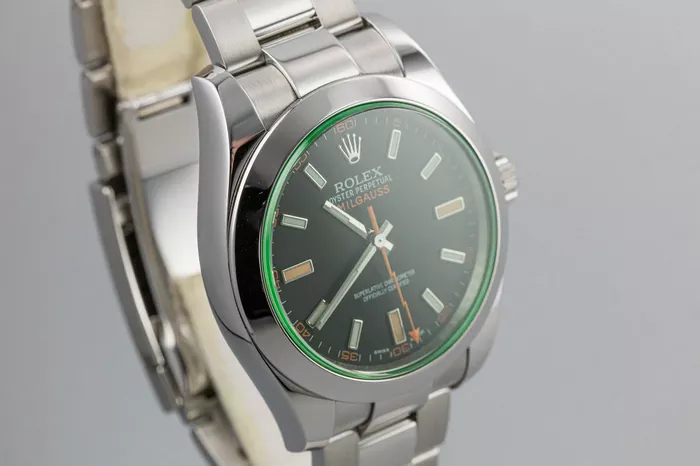In the world of horology, the dial of a watch serves multiple roles: it keeps time and acts as the visual identity of both the brand and the specific model. Rolex, with its expertise and facilities, elevates the craft of dial-making, transforming it into an art form.
The dial of an Oyster Perpetual Day-Date 36, featuring a motif created through the champlevé method of grand feu enamelling, exemplifies the craftsmanship involved. This process involves applying enamel into carved cells on the dial and then firing it at high temperatures.
David Riboli, head of the watch prototype department at Rolex, explains, “The dial is often considered the face of the watch, giving each model its unique personality. This is particularly true for dials made of natural stone or mother-of-pearl, as these materials ensure each dial is one-of-a-kind. The dial is a critical element of the design, resulting from an intense collaboration between designers and R&D teams.”
The Dial-Making Process
Rolex employs around 500 specialists dedicated solely to dial-making at its Chêne-Bourg facility in Geneva. Here, every aspect of dial creation, from conceptualization to final assembly, is executed with precision. The process combines traditional craftsmanship with cutting-edge technology, ensuring every dial meets the highest standards of quality.
Each year, Rolex develops hundreds of dial prototypes, but only a select few are added to its esteemed catalogue. These designs undergo rigorous evaluation for technical, aesthetic, and commercial viability. Transforming a metal disc into a finished dial ready for assembly requires over 60 operations.
From Blanks to Masterpieces
The journey of a Rolex dial begins with the creation of blanks—small, round plates typically made of brass or gold. Brass is chosen for its ease of manipulation and good conductivity, while gold is favored for its malleability, making it suitable for dials that require gem-setting or enamelling.
For dials with apertures such as day and date displays, windows are cut out. Tiny holes for mounting appliques are then milled. After machining, the blanks are polished and sandblasted. Brass blanks are electroplated with gold and nickel to protect against oxidation and ensure durability, while gold blanks skip these treatments as gold does not oxidize.
The Art of Decoration
Decorating the dial is a blend of state-of-the-art techniques and traditional methods. Laser technology is used alongside traditional crafts such as guillochage, which involves engraving intricate geometric patterns onto dials, and champlevé grand feu enamelling. Other forms of decoration include sunray finishing, achieved by coating the dial in a mildly abrasive solution and brushing it to create radiating lines, and fine satin finishing, which produces a matte surface through sandblasting.
Rolex also uses natural materials like mother-of-pearl, opal, onyx, and meteorite for its dials, sourcing these globally and selecting them meticulously. Diamonds set on Rolex dials are individually hand-placed on an 18 ct gold base plate.
Creating Vibrant Colors
Rolex is renowned for its colorful dials, created using three main methods: lacquering, electroplating, and Physical Vapour Deposition (PVD). Lacquering involves airbrushing fine layers of lacquer to achieve intense colors, while electroplating uses electrolytic baths to produce metallic shades. PVD, a more complex process, covers the dial’s base plate with an ultra-thin layer of metal oxides, alloys, or nitrides in a dust-free environment.
Finishing Touches
To complete the dial, Rolex artisans coat each one with a transparent varnish, enhancing the depth of color and protecting the surface. Appliques are then positioned by hand with paper-covered tweezers to avoid scratches and riveted into tiny holes using precise pressure. Each dial undergoes visual inspections and drop tests to ensure everything is securely fastened.
The Human Touch
Despite advanced technology, the trained human eye remains irreplaceable in detecting imperfections. Riboli emphasizes, “A beautiful and harmonious dial makes a statement by virtue of its perfect design, colors, and decorative elements. For instance, all sunray-finish dials are checked individually to ensure uniformity. The beauty of a dial lies in its perfection, captivating the observer.”
Rolex dials are more than mere components; they are the heart of the watch, a testament to meticulous craftsmanship and innovative design.

